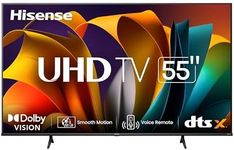Buying Guide for the Best 55 Inch Televisions
Choosing a 55-inch television is a great way to enjoy a cinematic experience at home without overwhelming your living space. When shopping for a TV in this size, it's important to consider how you'll use it—whether for movies, sports, gaming, or general viewing. Think about the room's lighting, your viewing distance, and what features matter most to you. Understanding the key specifications will help you find a TV that fits your needs and enhances your entertainment experience.ResolutionResolution refers to the number of pixels that make up the picture on the screen. The most common resolutions for 55-inch TVs are Full HD (1080p), 4K (Ultra HD), and sometimes 8K. Higher resolution means sharper and more detailed images, which is especially noticeable on larger screens. For most people, 4K is the sweet spot, offering excellent clarity for movies, sports, and games. If you mostly watch standard TV or older content, Full HD may be enough, but for future-proofing and the best experience, 4K is recommended. 8K is available but not widely supported by content yet, so it's only worth considering if you want the latest technology and are prepared for limited content.
Panel TypeThe panel type determines how the TV displays images and affects things like color, contrast, and viewing angles. The main types are LED, QLED, and OLED. LED TVs are common and offer good performance for most uses. QLED TVs use a special layer to enhance brightness and color, making them great for bright rooms and vibrant visuals. OLED TVs provide the best contrast and deep blacks, which is ideal for movie lovers and dark rooms, but they can be more expensive. Think about your room's lighting and what you watch most to decide which panel type suits you best.
Refresh RateRefresh rate is how many times per second the TV updates its image, measured in Hertz (Hz). Common values are 60Hz and 120Hz. A higher refresh rate means smoother motion, which is important for fast-paced sports, action movies, and gaming. If you mostly watch regular TV shows or movies, 60Hz is usually fine. If you love sports or plan to use the TV for gaming, 120Hz can make a noticeable difference in smoothness and clarity.
Smart TV FeaturesSmart TV features refer to the built-in apps and operating system that let you stream content, browse the web, and use other online services. Some TVs have more user-friendly interfaces and a wider selection of apps. If you plan to stream a lot of content from services like Netflix, YouTube, or Disney+, make sure the TV supports your favorite apps and has a responsive, easy-to-use system. Voice control and compatibility with smart home devices can also be helpful if you want a more connected experience.
HDR SupportHDR stands for High Dynamic Range, which improves the contrast and color range of the TV, making images look more realistic and vibrant. There are different types of HDR, such as HDR10, Dolby Vision, and HLG. The more formats a TV supports, the more types of enhanced content you can enjoy. If you want the best picture quality for movies and streaming, look for a TV with good HDR support. If you mostly watch regular TV or don't care much about picture enhancements, this may be less important.
ConnectivityConnectivity refers to the types and number of ports available on the TV, such as HDMI, USB, and audio outputs. More HDMI ports are useful if you plan to connect multiple devices like a game console, soundbar, or streaming box. USB ports let you play media from external drives. Make sure the TV has enough and the right types of connections for your needs, so you don't have to constantly swap cables.
Audio QualityAudio quality is how good the TV sounds without external speakers. While most TVs have built-in speakers, they can vary in loudness and clarity. If you want a more immersive experience, look for TVs with enhanced audio features like Dolby Atmos or consider adding a soundbar. If you mostly watch news or shows where sound isn't as critical, built-in speakers may be enough, but for movies and music, better audio can make a big difference.
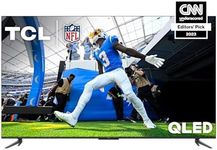
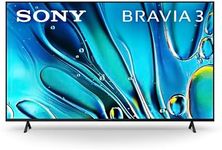
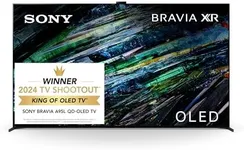
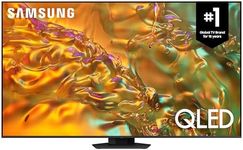

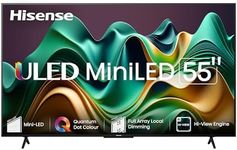
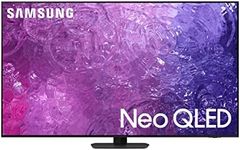
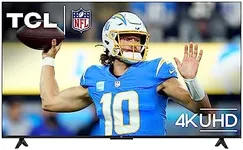
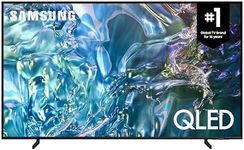
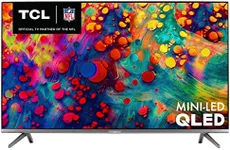

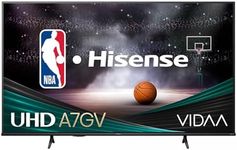
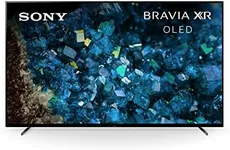
![SAMSUNG 55-Inch Class OLED 4K S90C Series Quantum HDR, Object Tracking Sound Lite, Ultra Thin, Q-Symphony 3.0, Gaming Hub, Smart TV with Alexa Built-in - [QN55S90CAFXZC] [Canada Version] (2023)](https://images-proxy.bestreviews.guide/JGvjxNnTL1YbgUtCXsrKxKDunfo=/0x150/https://m.media-amazon.com/images/I/41HbzdNwW7L._AC_CX679_.jpg)
